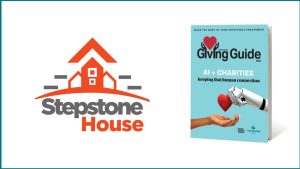Jason Lee never expected that five years into his journey at SmartCone Technologies he’d be gearing up to deploy an Internet of Things platform on the moon. Reflecting at the turn of 2020 on where his Stittsville-based startup is heading, however, he does feel a bit short of his goals.
“I was going for Mars,” he tells Techopia with a laugh.
But the moon will do for now as SmartCone looks to establish a subsidiary in New Mexico to take its in-demand tech to space.
(Sponsored)

Giving Guide 2025: Stepstone House
Immigrants Integration Support Services, operating as Stepstone House, is a registered charity supporting refugees and newcomers in Ottawa.

Giving Guide 2025: Voice Found
Voice Found is a leader in providing lived-experience, trauma-informed, barrier-free and ongoing recovery support for survivors of human trafficking and childhood sexual abuse.
The Ottawa-based company, which develops sensors that enable data collection and communication at the “edge” of networks, was a runner-up in the Hyperspace Challenge in late 2019. The competition and accelerator program, run by the United States Air Force and its partners, looks to solve problems facing the space industry.
Though SmartCone has made a name for itself working with partners such as IBM and Nokia on connected vehicles, construction sites and asset-tracking applications, the 12-person team also found a use case for its sensors on the moon.
SmartCone’s tech could measure temperature, vibrations and a host of other atmospheric conditions from the lunar surface and funnel that data back to researchers and companies on the Earth’s surface. That infrastructure, which SmartCone aims to deploy in 2022, could also communicate with astronauts and lunar vehicles for future manned missions to the moon.
Lee tells Techopia that ever since the Hyperspace Challenge wrapped up, he’s found himself enamoured when he looks up at the night sky and imagines his Ottawa-made sensors as the technology to connect terrestrial networks to the moon.
Revving up in autonomous vehicles
SmartCone’s space-focused business in New Mexico isn’t the only subsidiary the Ottawa firm is working on. The company also has AutoGuardian, which looks to underpin the technology that will enable a self-driving world.
There’s been progress in this direction, too. The company is working with partners such as Aurrigo Canada, Nokia and BlackBerry on the AVIN Whitby project, which sees autonomous shuttles ferrying commuters through the southern Ontario city’s downtown. SmartCone’s sensors, deployed through the area, act as an extra set of eyes for the shuttles and pedestrians to help skirt any potential collisions.
SmartCone will also be on display south of the border next year at the North American International Auto Show in Detroit. AutoGuardian won a US$1.6-million contract with the state of Michigan to conduct an on-site demonstration with similar autonomous shuttles at the major automotive event.
Tenille Houston, who leads the AutoGuardian team, says the 2019 launch of Ottawa’s L5 testing site for autonomous and connected vehicle technology has already been a boon for SmartCone. As the company bids on public infrastructure projects, it includes the L5 site as an asset in its pitches.
“That gives SmartCone and AutoGuardian even more credibility, because we have our own test bed,” Houston says.
SmartCone is fully revenue-funded at this stage, save for small chunks of government and angel funding as well as an upcoming $500,000 loan from Export Development Canada. The firm’s customers prepay for the solution, which Lee believes is an indication of the demand for the modular IoT platform.
Rejecting rigid focus
Between the moon, autonomous vehicles and a slew of other use cases, Lee admits the fledgling startup might seem stretched thin. He says that prospective investors are “constantly” shaking their heads, insisting that SmartCone focus on one vertical in the early going and branch out into different markets only after it’s better established.
“That’s been the curse of starting SmartCone, is it can do everything.”
SmartCone CEO Jason Lee
“That’s been the curse of starting SmartCone, is it can do everything,” Lee says. “So what are we focused on?”
But the range of applications that SmartCone can enable is the exact selling feature Lee says he wants to build the company on. The CEO’s vision of the company is to build out a series of subsidiaries that target a specific market and unite them under the SmartCone umbrella.
Once the company has identified a market worth at least $50 million where the team sees an application for SmartCone’s tech, Lee says the company puts a call out to entrepreneurs and partners that are keen to build and lead that part of the business. Future iterations will, for example, see an academic subsidiary aimed at researchers who want to subscribe to SmartCone’s feeds of data.
This approach, which provides team leaders such as Houston with founders’ shares of the subsidiary, is a collaborative one meant to encourage Canadian innovation, Lee says.
This model of shared ownership is part of his vision to build a replacement for the bygone giants of Canadian tech such as Nortel, which saw numerous companies spin off from that firm and the talent it bred internally. SmartCone looks to do the same by giving a technological foundation for founders to create semi-independent businesses.
Though those goals seem lofty, Lee’s stratospheric ambitions have already put SmartCone on a trajectory that would give most entrepreneurs a serious case of vertigo.





